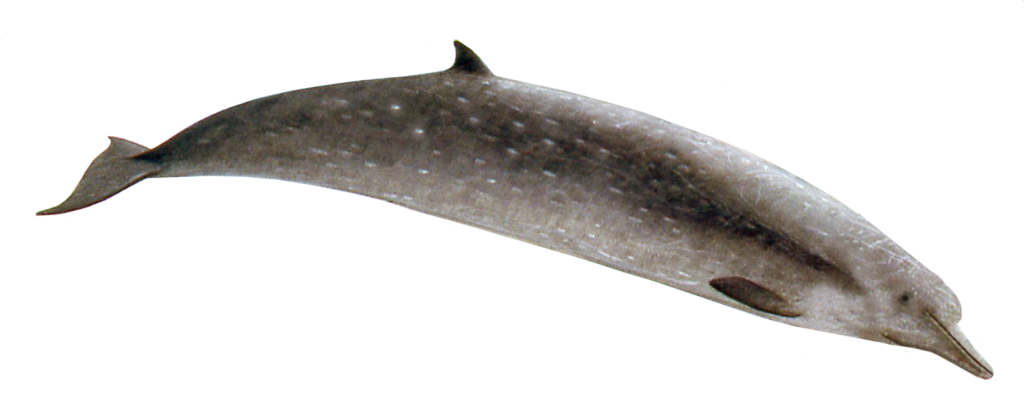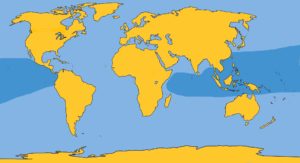
Family: Ziphiidae
Genus: Indopacetus
Species: I. pacificus Longman, 1926
This is one of the rarest and least observed of all beaked whales, and often confused with other members of its taxonomic family.
Physical Description: They possess a large robust body with a large, well-defined forehead, or melon that grown much larger with age. As with all beaked whales, they possess a wishbone shaped pair of throat grooves.
Color: These animals are dark gray-brown extending from the blowhole and eyes to the back. The upper jaw of the beak is darker than the lower jaw.
Fins and Flukes: Small dark flippers fit into depressions on either side of the body. A well-developed dorsal fin located two-thirds of the way down the back. The flukes are well developed with no median notch.
Length and Weight: Adults are known to reach lengths of about 23 to 30 ft (6 to 9 m). A single neonate calf measured 9.5 ft (2.9 m).
Teeth: There are two conical-shaped teeth at the tip of the lower jaw, visible in males when the mouth is open.
Feeding: Thought to be similar to other beaked whales; squid and octopus.
Breathing and Diving: Dives can last from 14 to 33 minutes with what has been described as an aggressive swimming style. Their blow is relatively small and bushy, slightly angles forward.
Mating and Breeding: No information available.
Herding: Groups of 10 to 20 seem normal, but occasionally up to 100.
Distribution: Their distribution is poorly understood, but thought to include warm and deep-water tropical regions of the Pacific and Indian Oceans, including Hawaii. Strandings have occurred in Kenya, Somalia, South Africa, northern Australia, the Maldives, the Philippines, South Japan, and Sri Lanka.
Migration: No information available.
Natural History Notes: These animals have been observed in the presence of pilot whales, spinner dolphins, and bottlenose dolphins.
LONGMAN’S BEAKED WHALE DISTRIBUTION







